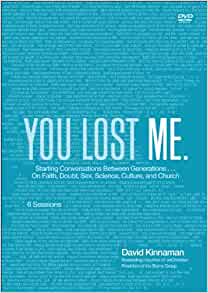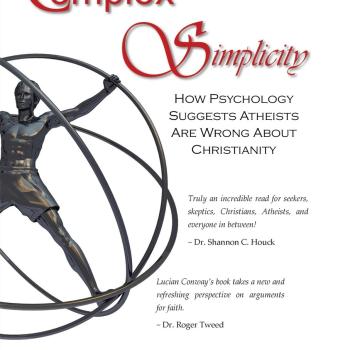
What Kind of Book is You Lost Me?
The book You Lost Me by David Kinnaman was published in 2011 and then again in 2016 with revisions and expansions on the original work.
Kinnaman is a researcher for the Barna Group. Barna is a Christian organization and, while they perform legitimate research using time-tested approaches of social science, the fact that their research is motivated by and done for Christian organizations has gotten them significantly less exposure or respect than other groups like Pew Research Center, Nielson Polling, or YouGov.
As the title might suggest, the author is reporting on his research, performed largely in the 2000s, about the significant drop-off in church attendance among young people of the time. The book itself was written with the purpose of offering advice to churches on how to better retain youth attendance and address the concerns of the new generation. To this end, the last section of the book is filled with guest contributions from high-profile individuals working in various ministry capacities with advice for church leaders.
A Study with Narrow Application
Due to the period in time Kinnaman was researching, the “youth” population he was studying was Millennials, who would have been in their teens and 20s at the time.
His work confirms some of my own findings insofar as a significant portion of the religious “dropouts” are coming from the Catholic church as I, also, have found. Similar to my findings, his participants consisted almost exclusively of individuals who were raised in the church.
In this book, “dropouts” would be defined as those who left the corporate church. This would include those who converted to other faiths, those who practice their faith privately, those who cease to participate in religion altogether, and those who become irreligious (atheist, agnostic, humanist, etc.)
The book’s title is inspired by the overall sentiment that “I didn’t leave the church, the church left me,” which may relate to the current sentiment of “church hurt” or “religious trauma syndrome.”
The Barna findings as of this book’s publication were that the overall sentiment that young people had of the church was negative, and that these dropout’s attitude toward the church came to mirror those of their unchurched peers, suggesting that there was at least some cultural element at play in the move from church-attendance to dropout; as the guest contributors highlighted “the old way of church no longer works. Let the new generation take over and improve things.”
The author states his thesis up front: that the church is not investing in one-to-one mentorship with these young people, such that church participation has become impersonal and irrelevant to them. He suggests that if the church were to adopt a mentorship rather than a seminar approach, youth would be more likely to remain.
The book is a detailed look at a very narrow cross section in time a decade ago when the Millennials were still considered “The Next Generation.”
A good deal of the book is exploring what these new Millennials (which the book calls “Mosaics”) are like in comparison to the older generations, and what their unique spiritual concerns and interests are.
All helpful information if you happen to be a youth pastor back in 2011, but not as pertinent to my own research as I would like. Most of this information is very old news, and this study would need to be done all over again to address the current youth culture of Gen Z, which do not share all the same features as the Millennials, now approaching middle age.
Three Kinds of Religious Exit
The book examines three groups which Kinnaman calls “Nomads,” “Prodigals,” and “Exiles.”
“Nomads” refer to individuals who have exited the church, but remain religious in some sense. “Exiles” have not necessarily exited the church, but they do not feel at home or accepted in the church, or as Christians in their school or work environment. This is to say, they don’t feel like they can behave like Millennials in church, and they cannot behave like Christians around their friends. They are, in essence, hiding their true nature and thoughts so as to be accepted or not make waves.
“Prodigals” are the group with which I am most interested, as these are the people who have either lost their faith or converted to a different religion.
The book uses for its case studies celebrities within the Millennial generation who have some experience similar to what he is talking about, such as David Colbert and Katy Perry – both at the peak of their respective careers in 2011.
The author spends most of his time talking about the special concerns of Millennials, and how these intersect or clash with church.
The Utility of the Book for Deconversion Research
As a researcher, my very specific research question is “How does a person transition from identifying as Christian and into identifying as Atheist.” My hope is to find a principle which could be broadly applied to the religious behavior of individuals who exit religion. Something akin to the work of Lewis R. Rambo’s model of religious conversion.
This book had a shelf-life which expired within five years of its publication as the Millenials aged out of their youth, and their ideas were no longer relevant to youth leaders. Now it serves as a historical retrospective of what happened within the church a decade ago.
That said, there were a few nuggets to be mined from this book.
In chapter 8, the author relays his findings which suggest that the implicit conflict between faith and science has led to young people exiting the church. This has been a trope in the atheist/Christian dialogue for some time now, but it almost seems cliché, and as a researcher I have to be skeptical of whether tropes, cliché’s, and stereotypes have any substance behind them. Granted, most deconversion research finds that intellectual objections figure strongly into the reasons given for deconversion, but generally such intellectual objections have to do with Bible problems. Nevertheless, I have found some of this faith-versus-science thinking in my case studies, and it was helpful to see these specific findings from a professional researcher.
Can I recommend this book? Not really. The book was very readable and the author seemed likable. However, the audience to whom this book was written was the church of ten years ago, and the advice it offers would need updating to address the concerns of adults in the church, or a complete re-investigation into the concerns of Gen Z.
This is not to say the book didn’t portray accurately why young people were walking away from the faith in the 2000s and 2010s, and so the book has some historical value, but not to current church leaders. Nor were the data in the book relevant to a broader research context.














